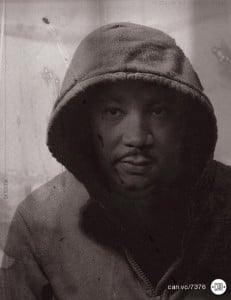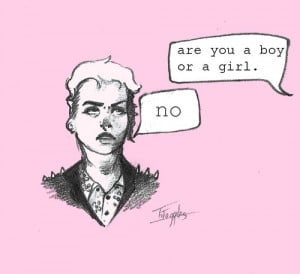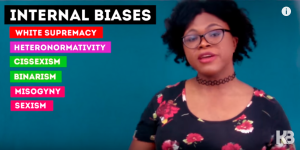
Source: Gun Show Gallery
How do you decide what to do when facing a sketchy guy, or a sketchy situation?
Trust your intuition, right?
Not so fast.
Because I bet George Zimmerman thought he was trusting his intuition when he followed Trayvon Martin.
When teaching self-defense, I do tell my students, “Trust your intuition.” What I mean is trust your intuition unclouded by what society has taught you about race, class, gender, and “otherness.”
Of course that’s impossible.
Here’s how that programming works.
The D.C. area was targeted by two snipers in 2002; within two days after the killing began, witnesses at the sites of the shootings reported seeing a white box truck driving away.
Media spread the “news” that the shooter was driving a white box truck. White box trucks soon became the target of the investigation and of widespread fear. People steered clear of places where they saw white box trucks, and people who drove them for a living stopped going to work because they didn’t want to inspire more fear – or become a target.
The snipers were caught just over two weeks later, and they had been driving a dark blue sedan the whole time.
But in only days, with no truth underlying it, almost 4 million people had learned to fear white box trucks and the people who drove them.
Imagine the power of a lifetime of such messages. What people in the D.C. area came to believe about white box trucks is multiplied by lifetimes and generations of such messages about Black men.
All of us who grew up white in the United States got this indoctrination about Black men. We learned from a young age to fear them.
Black men are portrayed as extra-threatening to women. Movies, TV shows, and news media all teach us this lesson – and that’s not taking into account the lessons we may have learned from those who raised us. (If you think you grew up immune to this training, take the Implicit Association Test on race, which measures unconscious bias.)
Sexism and racism are woven into a tight fabric that maintains the privilege of whiteness and of maleness. In this mindset, Black people are seen as inferior, and one effective way to continue their social and economic oppression is to portray them as a threat.
White women are inferior, vulnerable, and scared; they need protecting. Voila!: The oppressions of racism and sexism – and the attendant privilege for all of us who are white or male, and especially white males –are reinforced.
Get real.
In 75% of sexual assaults on white women, the attacker is a white man.
I’ll say that again: If you’re white and you’re sexually assaulted, your attacker is overwhelmingly likely to be white. Black men rape white women roughly in proportion to their numbers in the U.S. population.
Our warped notion of how “dangerous” Black men are leads us, like George Zimmerman, to focus a lot of anxiety on them.
It leads to the modern equivalent of lynching.
It perpetuates racism.
It cuts us off from other human beings.
When we act out of our fear and hatred, out of our unexamined programming, we’re being George Zimmerman.
Here’s another thing: It doesn’t help you be safer.
Fearing Black men blinds white women to the places where the greatest threats to us lie: with white men, especially white men we know.
The sniper case fell prey to this pattern: Police officers stopped the shooter in his dark-blue sedan several times during the period of the shootings. They let him go because they were looking for a white box truck or van.
So how do we get out of this cycle? What can you do to build a just and violence-free world?
Examine your emotional reactions and your behaviors. When you see a dark-skinned man, what goes through your mind? Slow down and observe yourself.
Ask: What am I thinking, feeling, and doing (e.g. am I going out of my way to avoid him)? Am I reacting out of my fear of the “other”? Or is there something he’s doing that signals a problem?
Train yourself to respond to people and problems based on the other person’s behavior, not their identity. Does he seem agitated or angry? If you set a limit, with words or with body language, does he respect it?
Play games with your mind: If you see a black or brown man doing something, ask yourself how you would view a white man doing the same thing. Practice with yourself in mundane, non-threatening situations so that if something tense or scary happens, you’ve got a new basis for your perceptions.
The less anxiety you have, the more tuned in to your inner voice – intuition for real – you can be, and the more that inner voice can supersede your conditioning.
When we talk about wanting a safer world, we have to want a safer world for everyone.
And that means we have to do our work not to be George Zimmerman.
Want to discuss this further? Login to our online forum and start a post! If you’re not already registered as a forum user, please register first here.
Lauren R. Taylor is a Guest Writer for Everyday Feminism and teaches skills for stopping harassment, abuse, and assault with Defend Yourself. She started working to end gender-based violence in 1978 and somehow she’s still passionate and inspired. She loves her hometown of Washington, DC, and a vision of a better world. Her friend, colleague, and fellow troublemaker Sarah Trembath contributed to this piece.
Search our 3000+ articles!
Read our articles about:
Our online racial justice training
Used by hundreds of universities, non-profits, and businesses.
Click to learn more




















